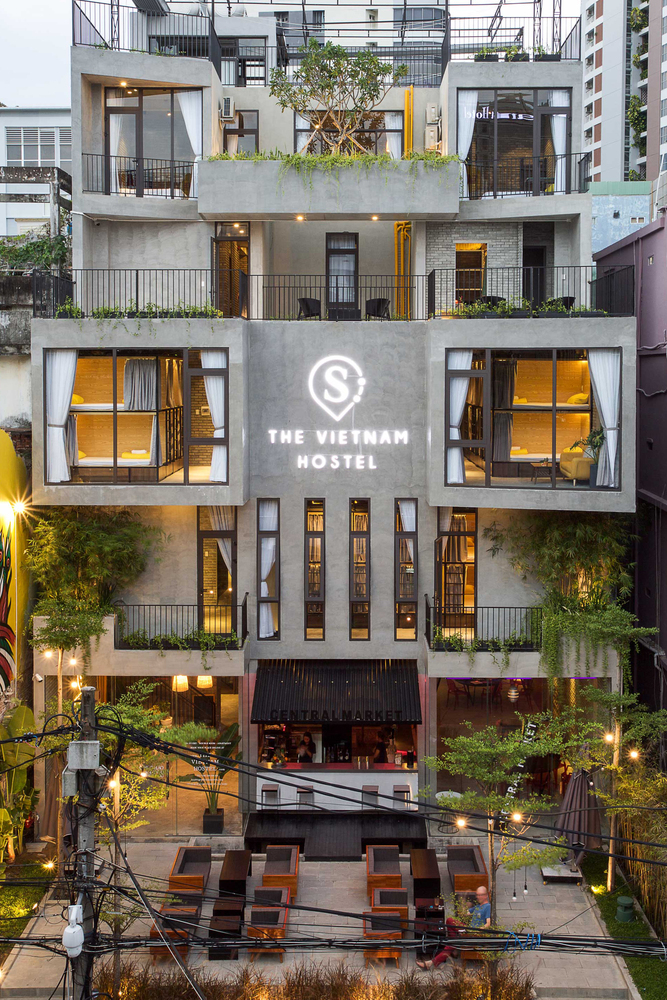Chatouya Visitor Center Tumushi Architects
2018-08-15 22:00
景观沉降查努亚游客中心位于天宇峡谷,距西安70公里。是秦岭国家植物园深度体验区的入口。现有节目和游客中心的外观无法满足客户的新需求,因此需要升级整个站点和建筑物。通过详细阐述并将全新的项目划分为部分,新的建筑与保存的建筑融为一体,融于自然环境,成为秦岭的景观沉降。
Landscape settlement Chatouya Visitor Center locates in Tianyu valley, 70 km away from Xi'an. It is the entrance of depth experience zone in the Qinling National Botanical Garden. The prior programs and appearance of visitor centre cannot meet client's new demands, hence whole site and buildings need to be upgraded. Through elaboration the position and breaking up whole new programs into parts, the new buildings, with preserved ones, are melt into natural environment and becomes a landscape settlement in Qinling Mountains.
Birdview. Image © Chao Zhang
Settlement Among Landscape. Image © Qili Yang
以前的建筑布局改造没有合理的布局,缺乏对自然景观的尊重。除了移除餐厅的体积外,这三座原始建筑和大树都被保留了下来。完成现场清理后,我们计划在西侧的停车场和厕所.新的箱子被放置在工地的东部。在自然景观的指引下,所有的盒子都会选择合适的大小和位置。展览盒
Layout Reconstruction The previous buildings is no reasonable layout and lack of respect to natural landscape. The three original buildings and big trees are preserved except removing restaurant volume. After completing site clean-up,we plans parking lot and toilet in the west side. The new boxes are placed into the east part of site. Following the guidance of natural landscape, all the boxes choose their appropriate size and location. Box of exhibition & visitor service is displayed in a relatively empty plots; Box of restaurant closes to river; Box of tea room faces to Cliff and box of toilet is hidden into bamboo trees. Those new boxes, attaching the preserved buildings, carefully disperse into elements of nature, create a prototype of the densely landscapes settlement.
第二步是把盒子固化成两堵墙。根据程序和视图的不同,其他两堵墙被推开得很远或更近。墙的不同高度形成空间重叠。此时,最终的布局是固定的。它由6组8座不同大小的建筑物组成。总建筑面积为,约1400平方米。散乱的布局带来了聚落式的空间体验。体积小,伴随着空间成分的分离和重叠,进一步消化了质量。此外,它还表现出建筑与景观之间的诗意渗透。
The second step is that boxes are solidified two walls. The other two walls are pushed out far or near depending on program and view. Different height of the wall form a spatial overlap. At this moment, final layout is fixed. It consists of 6 groups of 8 buildings with different sizes. A total construction area is about 1,400 m2. The scattered layout brings a settlement-type spatial experience. The small volumes, accompanied by the separation and overlap of space composition, further digest the mass. Furthermore, it shows a poetic penetration between architecture and landscape.
Settlement among Landscape. Image © Chao Zhang
材料共熔局部材料被重复使用.例如,泥土被重新夯实成墙,中式瓷砖被回收到人行道上.同时,金属面板和透明玻璃使外观感觉现代和透明。茶馆的生混凝土增强了体积感。而混凝土的条纹结构给茶馆带来了更好的规模。材料的离散和对比使用强化了景观聚落的概念。传统材料体现了时间的痕迹,与现代材料形成了紧张的关系。
Material Co-melting Local materials is re-used. For example, the earth is re-rammed into walls, Chinese-style tile is recycled into Pavement. In the meantime, the metal panel and transparent glazing makes façade feel modern and transparent. The raw concrete of teahouse reinforces the sense of volume. While the striped texture of concrete gives the teahouse a better scale. The discrete and contrasting use of material strengthen the concept of landscape settlement. Traditional materials, embodying traces of time, constitute a tense relation with modern materials.
Partial View. Image © Chao Zhang
景观增强-借鉴传统乡村,每一座建筑都有直的或弯曲的灰色石板人行道。在河边附近,架空的木制人行道连接着河流和景观节点。院落被建筑物包围,由云状景观图案构成,装饰着回收的瓷砖和白色的石头。其余的空地是由河上的白色鹅卵石铺成的。同时,建立了集中式污水收集系统。经二次净化处理后,用于植物灌溉。在低洼地区还建立了一个雨水花园,从屋顶收集雨水,并通过生态净化将雨水排入河流。
Landscape Enhancement Learning from traditional village, each single building is linked by straight or curved grey slate footpath. Near the river, the overhead wooden walkway connect between river and landscape nodes. Enclosed by buildings, the courtyard is made by a cloud-shaped landscape pattern, decorated with recycled tiles and white stones. The rest of open space is paved by white pebbles from the river. Meanwhile, we set the sewage system for centralized sewage collection. After second purification treatment, it is used for plant irrigation. A rain garden is also set up in the low area to collect the rainwater from the roofs, and discharge the rainwater into river through ecological decontamination.
Interior View. Image © Chao Zhang
Interior View. Image © Chao Zhang
四季茶室四季茶室,一个大小为5X5m2的混凝土箱体,位于天宇河沿岸。面对河流的景色,我们设置了两个取景器。上面是悬崖景观,由结构悬臂延伸到“凹形”角窗。它被推进形成一个巨大的窗台。较低的水景,通过窗框的构造隐藏,使开阔的景观最大化。内部和外部都是用混凝土浇筑的,采用条纹木模。该平台采用竹制钢板制成,形成一个完整的桌子和椅子。室内壁炉用于冬季取暖,室外竖立的楼梯供凉爽的夏季观赏。两间茶馆有着相同的形状,但借来的风景却五花八门。
Four Seasons Tearoom Four Seasons tea room, a single concrete box, with the size of 5X5m2, is placed along Tianyu River. Facing the river scenery, we set up two viewfinders. The upper is for cliff view, extended to "concave" shaped corner window by structural cantilevers. And it is pushed forward to form a large windowsill. The lower is for water view, by tectonic hiding of window frame, maximized the open landscape. The interior and exterior are all cast in concrete with stripe wooden molds. The platform is made of bamboo steel plate to form an integrated table and chair. Indoor fireplace is for winter warming, and external erected stairs is for cool summer viewing. Two teahouse have same shape, but the variety of borrowed scenery.
Tearoom Interior. Image © Qili Yang
Tearoom Near the River. Image © Qili Yang
在河边的茶室。图像:QILIYangYangYang
从功能上来说,游客中心是一个当代的概念。因此,最初的设计理念是试图在现代镜头中回应秦岭遗址。它既不应被历史文化符号所借用,也不应受城乡风格的影响。在我们看来,它应该是简单而抽象的。它既创造了风景,又体验了自然。
Summary Functionally, the visitor center is a contemporary notion. Therefore, the original design concept was to try to respond the Qinling site within a contemporary lens. It should not be borrowed by the historical and cultural symbol, nor should it be influenced by the urban or rural style. In our minds, it should be simple and abstract. Both it makes landscapes and experience nature.
Partial View. Image © Chao Zhang
 举报
举报
别默默的看了,快登录帮我评论一下吧!:)
注册
登录
更多评论
相关文章
-

描边风设计中,最容易犯的8种问题分析
2018年走过了四分之一,LOGO设计趋势也清晰了LOGO设计
-

描边风设计中,最容易犯的8种问题分析
2018年走过了四分之一,LOGO设计趋势也清晰了LOGO设计
-

描边风设计中,最容易犯的8种问题分析
2018年走过了四分之一,LOGO设计趋势也清晰了LOGO设计
































































































